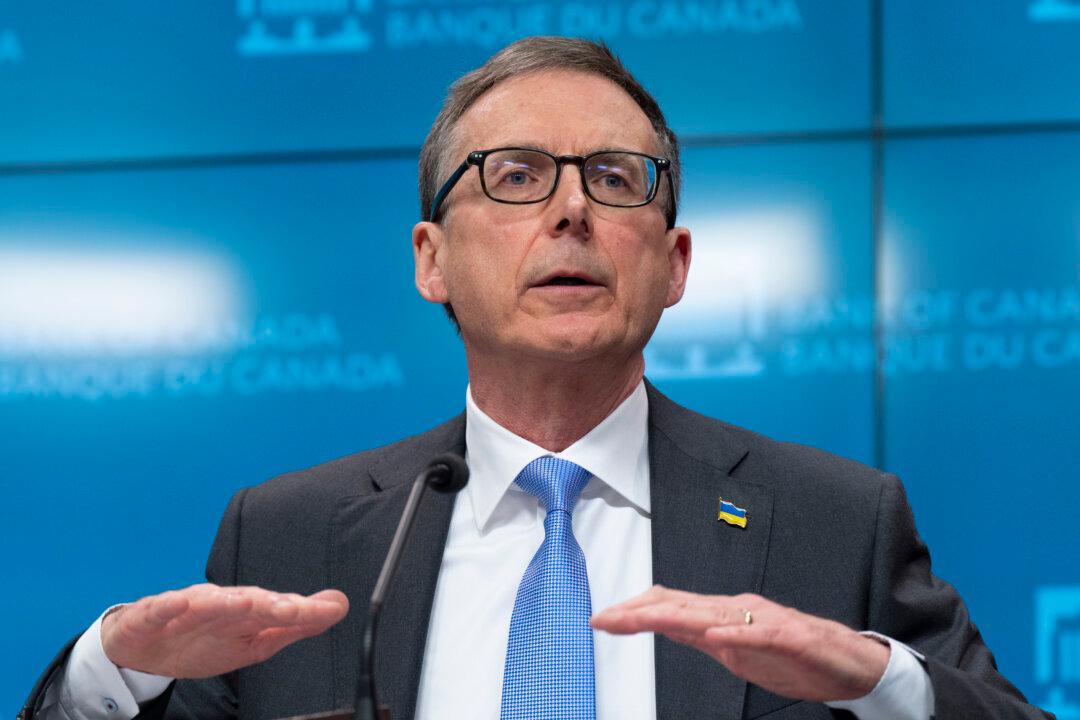OTTAWA—With an outsized rate hike, the Bank of Canada sent a clear message on April 13 that it’s aiming to get inflation under control. Economists say interest rates could rise by at least another full percentage point by year-end, which poses its own risks and uncertainties for the economy.
In two widely anticipated moves, the BoC raised its key rate from 0.50 percent to 1 percent and announced an end to its government bond-buying program. The bank has not raised rates by 50 basis points—a basis point is one one-hundredth of a percentage point—in a single announcement since 2000.
Just two of the signs indicating that the Canadian economy is overheating are the annual consumer price index (CPI) inflation rate and the unemployment rate. February’s inflation rate came in at 5.7 percent and inflation has now been above the 3 percent upper limit of the BoC’s target range since April 2021. And the 5.3 percent unemployment rate for March is the lowest on record since comparable Statistics Canada data became available in 1976.
“Inflation is too high. It is higher than we expected, and it’s going to be elevated for longer than we previously thought,” Bank of Canada Governor Tiff Macklem said in his opening statement at a press conference. He added that the economy has “fully recovered from the pandemic, and it is now moving into excess demand.”
Financial markets have been anticipating a series of rate hikes for a few months now, but the central bank’s tone on inflation has turned markedly more hawkish.
RBC senior economist Josh Nye said in a note to clients that the announcement “suggests the BoC has lost the patience it demonstrated back in January when it took a pass on raising rates.”
“Our forecast assumes more standard, 25 bp hikes going forward—until the overnight rate hits 2 percent in October—though we think another 50 bp increase will be an option on the table in June,” he added.
That half a percentage point hike would be a possibility, Nye said, if, for example, the unemployment rate dropped to 5 percent or lower.
For perspective, pre-pandemic the BoC’s overnight rate target stood at 1.75 percent. Now, with a stronger economy, labour market, and elevated inflation, that key rate is 0.75 percentage points lower.
The concern for Canada’s highly indebted economy is rates rising too quickly, and University of Waterloo economics professor and former BoC assistant chief economist Jean-Paul Lam says the bank will carefully watch how consumer spending and home prices are reacting.
Lam also raised the possibility of stagflation, in which inflation remains persistently high while the economy either doesn’t grow or falls into recession.
“We could have higher rates slowing down the economy, especially consumption growth, but inflation remaining stubbornly high if it continues to be driven by disruptions in supply chains, … the war in Ukraine, and disruptions in the labour market due to COVID and wage growth accelerating,” he told The Epoch Times.
“Uncertainty on these topics [sensitivity of the Canadian economy to higher interest rates and an end to bond buying] is high in part because interest rates have been so low for so long, and because central banks have not held such quantities of bonds before,” states the C.D. Howe Institute’s Monetary Policy Council.





